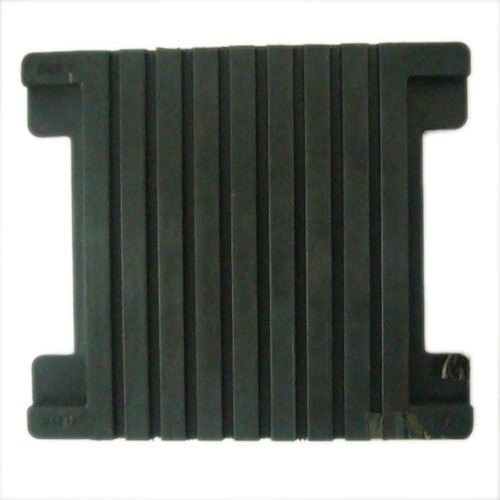Elastomeric Rubber Pads are flexible and durable components made from elastomer materials, primarily used for shock absorption, vibration damping, and load distribution in various industries, including railway systems, construction, and machinery. These pads are designed to withstand high loads while reducing noise, vibration, and wear, making them essential in environments where mechanical components experience dynamic forces.
Key Features of Elastomeric Rubber Pads:
- Material:
- Elastomers: The pads are made from elastomer materials, which can include natural rubber, synthetic rubbers (like neoprene, nitrile), or specialized polymers. These materials offer high elasticity, durability, and resistance to environmental factors.
- High Load Capacity: Elastomeric rubber pads are engineered to withstand heavy loads while maintaining flexibility and providing cushioning.
- Design:
- Flat or Molded Shapes: The pads come in various shapes and sizes, including flat sheets, molded parts, or custom designs, to fit specific applications.
- Elasticity: The elasticity of the material allows it to deform under load and return to its original shape, effectively absorbing shock and vibrations.
- Applications:
- Railway Systems: In railways, elastomeric rubber pads are placed between the rail and the sleeper or between the rail and the baseplate to absorb shocks, reduce vibrations, and distribute the load evenly, improving track stability and reducing wear on the rails.
- Construction: These pads are used in building structures to isolate vibrations and dampen noise, especially in load-bearing components like bridge bearings or base plates.
- Machinery: Elastomeric pads are widely used in industrial machinery to cushion moving parts, prevent metal-to-metal contact, and reduce wear and tear due to vibrations or impact.
- Benefits:
- Vibration Damping: Elastomeric rubber pads are highly effective in reducing vibrations, which helps prolong the life of machinery and structural components by minimizing wear and damage caused by dynamic forces.
- Shock Absorption: The elasticity of the rubber allows it to absorb and dissipate shock forces, protecting components from sudden impacts or stress.
- Load Distribution: These pads evenly distribute loads across surfaces, preventing point loading and reducing localized stress that can cause material fatigue or failure.
- Maintenance:
- Durability: Elastomeric rubber pads are generally low maintenance due to their resistance to wear, but they should be inspected periodically in high-stress environments to ensure they are not degrading or cracking.
- Environmental Resistance: Many elastomer materials used in these pads are resistant to water, chemicals, UV exposure, and extreme temperatures, enhancing their lifespan even in harsh environments.


